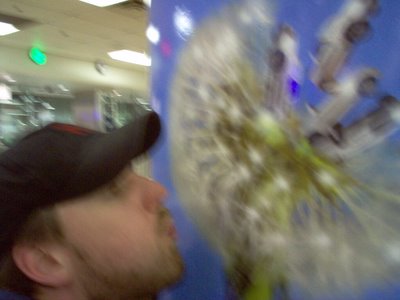SECAUCUS, N.J. — As Chris Arcari gets off the New Jersey Turnpike's brand new Exit 15X, green arrows join on a flat-screen monitor inside his sport utility vehicle to form the beginnings of the ramp's existence on a digital map.
In a white Ford Escape fitted with a video camera, a Global Positioning System [GPS] receiver and a laptop, Mr. Arcari and partner Rob Ditko work to maintain the freshness and accuracy of mapping databases on which millions rely. One wrong turn and, well, you get the picture.
As mapping technologies proliferate on websites, in mobile devices and inside automobiles, the work of these modern cartographers is essential.
During their December excursion off Exit 15X, the two men discover three new streets and a delivery access road. "Times like these, we just explore," Mr. Arcari says as he passes a new commuter rail station responsible for the new streets. "It's our version of finding a brave new world. We'll drive it until it connects to some point [already] in the database."
Riding shotgun, Ditko uses his pen tablet to denote an overpass, which appears as brackets on the display above the four-wheel-drive vehicle's gear shift. Later, he writes in the name of a new street, South Road.
Information gleaned from the green arrows, hand markings and video images ultimately go into databases maintained by Chicago-based Navteq Corp. and sent quarterly to such Internet mapping providers as America On-line Inc.'s MapQuest, Yahoo Inc., Microsoft Corp., Google Inc., and in-car navigation developers such as TomTom International BV.
Developers of the map applications can then apply their own touches, such that directions offered by Yahoo between the same two points may differ from MapQuest's, even though both use the same data from Navteq and its main competitor, Netherlands-based Tele Atlas NV.
"Users even five years ago were still just amazed you can get driving directions from point A to point B," says Jeremy Kreitler, Yahoo's senior product manager for maps. "They were okay if every once in a while, [the directions] took you down the wrong street or didn't know about a new housing development."
Since then, on-line maps have come a long way.
No longer satisfied with driving directions, consumers are also demanding information on a neighbourhood's restaurants, public transportation options and even real-time traffic conditions. People generate maps on mobile devices for hikes and errands, and they want maps for locations outside North America and Western Europe, too, where coverage can be spotty.
All that translates into greater demand on Navteq and Tele Atlas to make their databases even more accurate and complete.
Tele Atlas consults more than 40,000 sources, including state and local transportation departments, planning boards and motor vehicle agencies. Field analysts also monitor county growth rates, housing construction data and aerial images.
Where maps are already available from a reliable source -- an aerial image, a government agency, perhaps a utility company -- Tele Atlas will use that. But where there are discrepancies, Mr. Benson says, the company often sends a van with a driver and a half-dozen video cameras from which computers extract key information.
Tele Atlas spends tens of millions of dollars each year in North America alone to freshen its databases, currently more than 12 trillion bytes in size.
Navteq employs 514 field analysts in North America and Europe. They drove more than 5.6 million kilometres combined in 2004.
"It's like painting the Golden Gate Bridge," says John MacLeod, Navteq's executive vice-president for global marketing and strategy. "You spend a year painting it and you have to start over again. It's a never-ending challenge."
Both companies have been digitizing maps for about two decades, but only recently have GPS units, video cameras and laptops become central to the task. "Six or seven years ago," Mr. Ditko said, "we were writing on paper plots."
